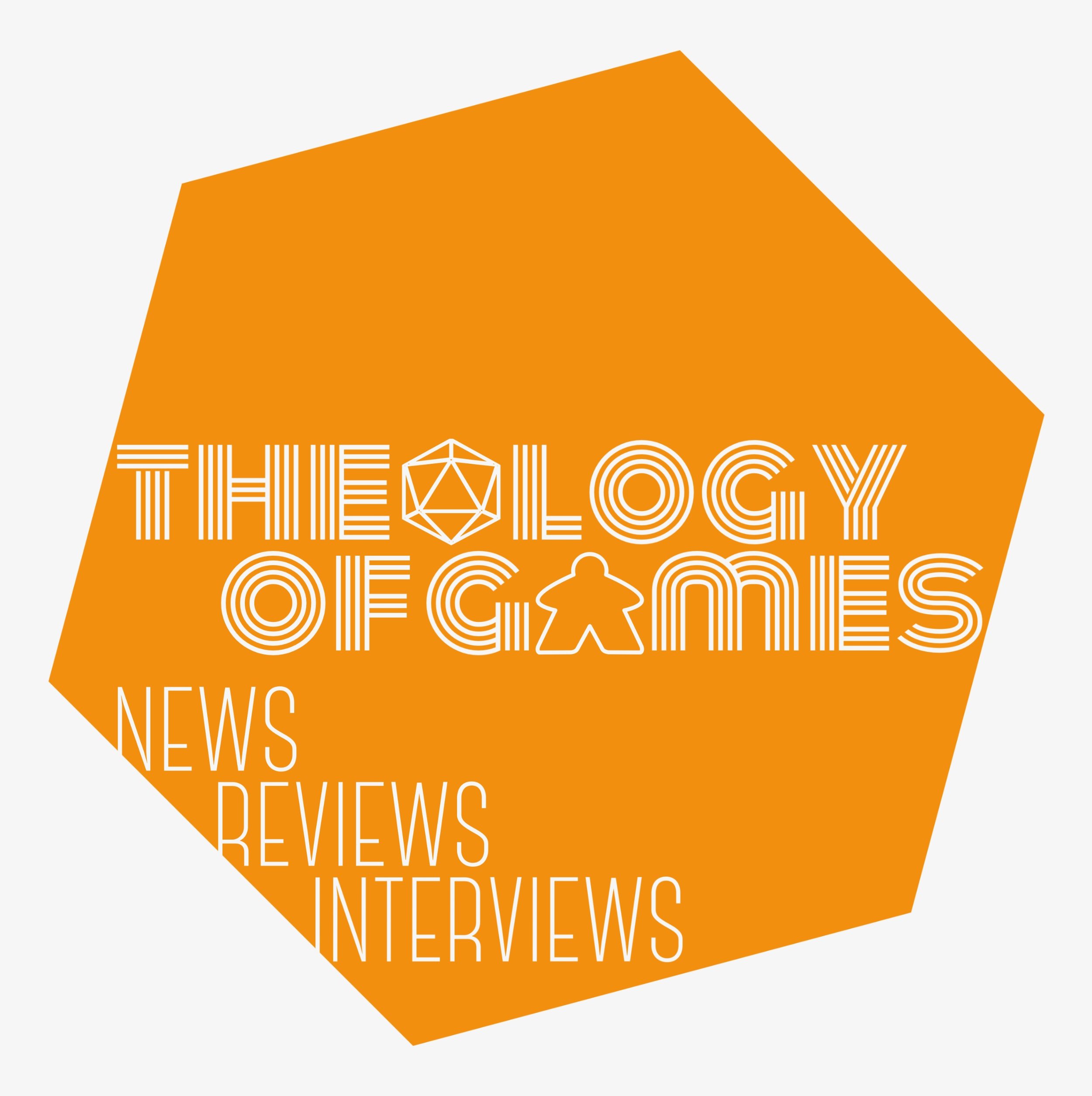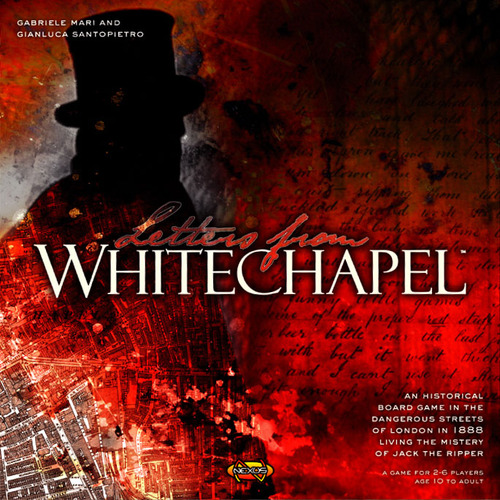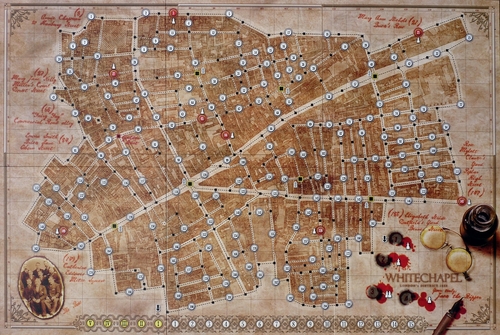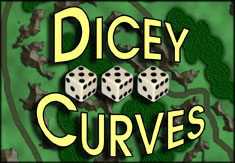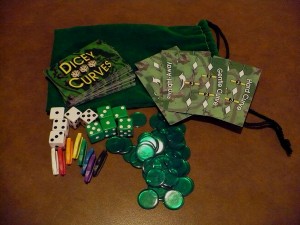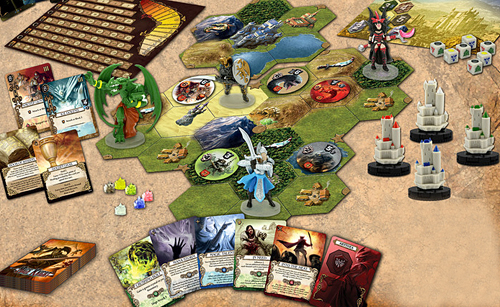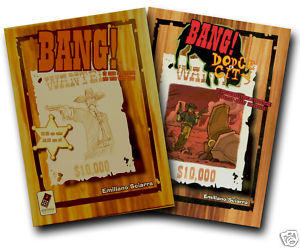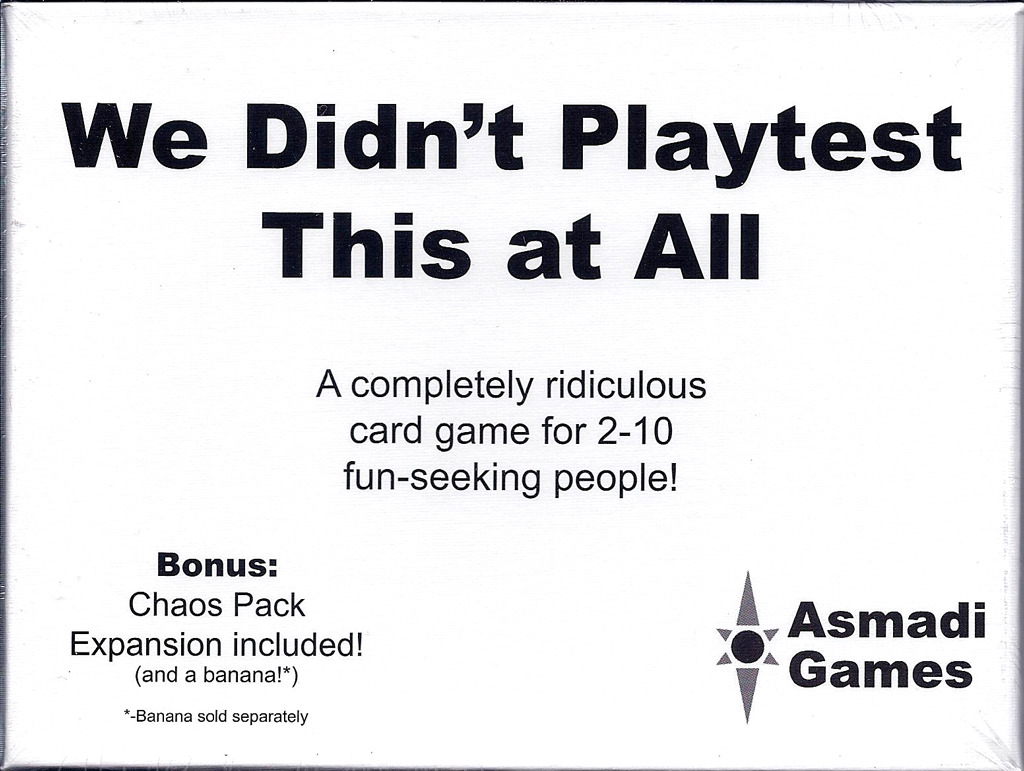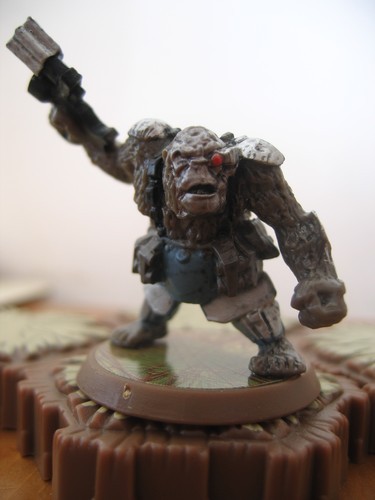By Firestone
 A while back I wrote about my Love/Hate relationship with Kickstarter, and in that article I mentioned a project I was going to back on faith. Well Tooth & Nail: Factions is that game. Was it worth my backing dollars?
A while back I wrote about my Love/Hate relationship with Kickstarter, and in that article I mentioned a project I was going to back on faith. Well Tooth & Nail: Factions is that game. Was it worth my backing dollars?
Well you’ll just have to read and find out…
The game is put out by Small Box Games, so it comes in a…small box. I like the size a lot, but there’s not a lot of room for expansions—if they make any. (Though it should be noted my copy is sleeved.) It plays 2-4 players, but based on the different rules for 3 and 4 players, it seems like it would just be way better with only 2—and I've only played 2-player so far...
So the game comes with ~200 glossy cards. They’re decent quality, though I would suggest sleeving them. The game is all cards, so you’re moving, turning, playing, holding, and shuffling them a lot. It’s not a deck-builder, so you won’t be handling them as much as you would in, say, Dominion, but still…
Those cards are divided into six Factions, each of which is designed to feel and play differently than the others, and Action Cards. Each Faction has five copies of six different troops. The game also comes with six oversized Faction cards that spell out each Faction’s unique in-game ability. My Kickstarted copy also came with six alternate Faction cards for more variety, and a Dogs of War variant that I have yet to try out.
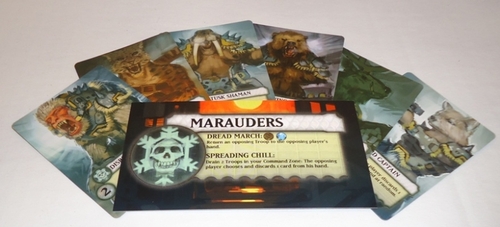 I really like the artwork on the cards. It’s not super sharp, like some of the CCGs Fantasy Flight puts out (which I also like, btw). But this feels more raw and organic and earthy.
I really like the artwork on the cards. It’s not super sharp, like some of the CCGs Fantasy Flight puts out (which I also like, btw). But this feels more raw and organic and earthy.
You’re trying to cause your opponent to run through his or her deck before you do: First person out of cards in their draw pile loses. So cards are life points, but they’re also your weapons to defeat your enemy.
The play area is divided into the War Zone and the Command Zone; when you play a troop card, you’ll play it down to one of those sections. The War Zone allows you to directly attack your opponent’s deck (but you ignore the special text on the troop card), or the Command Zone, where you don’t directly attack, but you will end up using the special text to affect things. The other important thing about the Command Zone is that at the beginning of your turn you’re able to draw one card for each card you have in your Command Zone.
You can either draw directly from your stack of cards, or you can draw an Action Card—a set of cards that are available to each player on his or her turn. You’ll need to use Action Cards to play cards down to the table, and to initiate an attack from the War Zone. One of my favorite aspects of the game is that the beginning of each turn forces you to make a tough decision about which type of cards you draw for that turn.
You don’t have to play an Action Card to activate a card in your Command Zone, but you have to discard the card after activation unless you have a copy of that exact card in your hand that you can discard. Sometimes losing that card is still a good choice; sometimes it isn’t… More tough choices.
The games last 15-30 minutes, and because of the variety of Factions (and 30 possible combinations of matchups), it’s easy to say, “Let’s play another quick game.”
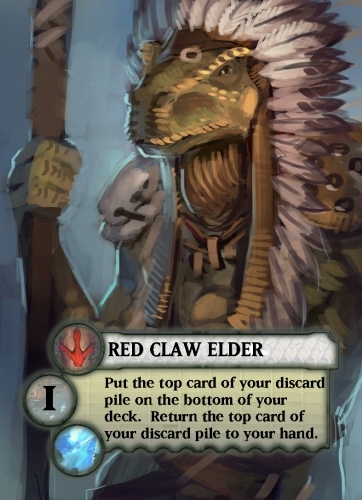 Yes, there’s some luck of the draw, but I think each turn is more an exercise in playing what you have in the best way, rather than hoping you draw that one awesome card that’s in your deck. <cough-Magic-cough>
Yes, there’s some luck of the draw, but I think each turn is more an exercise in playing what you have in the best way, rather than hoping you draw that one awesome card that’s in your deck. <cough-Magic-cough>
The Factions don’t feel completely different, but there’s definitely a different feel to each. The Enrodentia (rats) are weak, but have swarmish abilities. The Red Claws (dinosaurs) can take a beating (by pulling cards from their discard pile back into their draw deck). The Ostra Vultura (steampunk vultures!) mess with their opponent’s hand by forcing them to ditch cards, or by pulling cards from the opponent into the Vultura’s draw pile.
My one complaint is that sometimes the matchups seem to favor one side a bit. In one game my Pride Faction’s ability forced my opponent to remove his discards from the game, but he was playing the Vultura, and they don’t generally resurrect cards from their discard pile, so it didn’t really affect him. Meanwhile, his ability forced me to randomly discard a card from my hand. THAT WAS MUCH MORE USEFUL. But it could be that more experience will force me to be creative about what strengths I do have. It’s certainly not a deal-breaker at this point; it’s just something to be mindful of.
Overall, I’m liking Tooth and Nail: Factions quite a bit. And there are a few variations and expansions that I haven’t even touched yet, but I’m excited to give them a whirl!
This Kickstarter experience was great; I regret nothing. Thanks for reading!
 I like being surprised by a game—well...pleasantly surprised, anyway. I opened up my recently arrived, Kickstarted copy of Glory To Rome and found a small card game that I’d completely forgotten was a stretch goal. It’s called Plato 3000, and it’s basically rummy with special powers.
I like being surprised by a game—well...pleasantly surprised, anyway. I opened up my recently arrived, Kickstarted copy of Glory To Rome and found a small card game that I’d completely forgotten was a stretch goal. It’s called Plato 3000, and it’s basically rummy with special powers.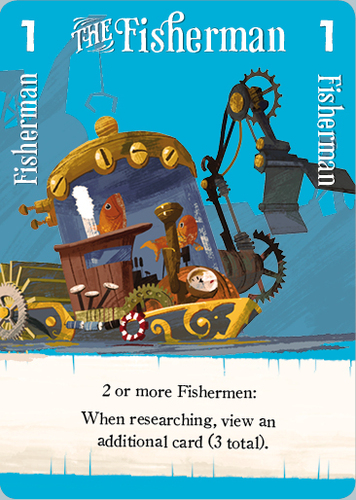 The various colors have special powers once they’re down in front of you as a meld. The Priest lets you lay down a meld when you have only two of a color. The Farmer lets you keep both cards when you draw off the top at the beginning of the turn. And the Soldier lets you attack your opponent’s melds and remove cards from them.
The various colors have special powers once they’re down in front of you as a meld. The Priest lets you lay down a meld when you have only two of a color. The Farmer lets you keep both cards when you draw off the top at the beginning of the turn. And the Soldier lets you attack your opponent’s melds and remove cards from them. Just as in Rummy, once someone discards his or her last card, the hand is over. Cards in front are positive points, and cards in your hand are negative points. There are a few other scoring cases, but that’s basically it: rummy with special powers. You continue playing until someone reaches 100 points, which seems to be four or five hands. There are rules for team play, but I haven't tried that yet.
Just as in Rummy, once someone discards his or her last card, the hand is over. Cards in front are positive points, and cards in your hand are negative points. There are a few other scoring cases, but that’s basically it: rummy with special powers. You continue playing until someone reaches 100 points, which seems to be four or five hands. There are rules for team play, but I haven't tried that yet.